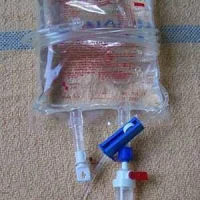An automated process that continuously samples electronic medical record data in real time and triggers an alert to the physician at the patient's bedside to warn of potential clinical decline was successfully implemented in a large U.S. healthcare system.
The algorithm works by sampling physiological and laboratory information from the electronic medical record (EMR)for at least two of the four systemic inflammatory response syndrome (SIRS) criteria as well as at least one of 14 acute organ dysfunction (OD) parameters contained within the electronic medical record (EMR). The SIRS events and OD events need to occur within 8 hours of each other. Once the alert was triggered, health providers were expected to confirm or deny the presence of severe sepsis.
The system was installed over 1.5 years in 24 Banner Health hospitals, from small critical access facilities to academic centres. Use of the predictive analytics meant that most high-risk patients were identified within 48 hours of admission. The study, published in the American Journal of Medicine, analysed results from applying the alert in real time to more than 300,000 patients in two phases: training and validation datasets. The results showed that the system identified the 1 in 5 patients who accounted for around 90% of hospital deaths. Patients who triggered the alert had a significantly higher chance of dying (hazards ratio of 4) in that hospital stay when compared to patients who did not trigger the alert. Patients who triggered the alert also had a longer period of ventilation and a longer hospital stay. In both phases around 30% of alerts were triggered when the patient was in the emergency department. In total 80.2% of alerts first occurred within 48 hours of admission.
Lead author Hargobind Khurana, MD, Senior Medical Director, Health Management, at Banner Health, commented that this early identification enabled early treatment for life-threatening conditions, including sepsis. “This is technology in action, helping improve patient outcomes, and it only promises to become more precise in the very near future,” he added.
The researchers note that the alert is not designed to replace other acuity alerts such as APACHE, but to alert providers in real time. The SIRS/OD alert can be reliably applied across all hospital settings.
Source: Elsevier
Image credit: Pixabay
The algorithm works by sampling physiological and laboratory information from the electronic medical record (EMR)for at least two of the four systemic inflammatory response syndrome (SIRS) criteria as well as at least one of 14 acute organ dysfunction (OD) parameters contained within the electronic medical record (EMR). The SIRS events and OD events need to occur within 8 hours of each other. Once the alert was triggered, health providers were expected to confirm or deny the presence of severe sepsis.
The system was installed over 1.5 years in 24 Banner Health hospitals, from small critical access facilities to academic centres. Use of the predictive analytics meant that most high-risk patients were identified within 48 hours of admission. The study, published in the American Journal of Medicine, analysed results from applying the alert in real time to more than 300,000 patients in two phases: training and validation datasets. The results showed that the system identified the 1 in 5 patients who accounted for around 90% of hospital deaths. Patients who triggered the alert had a significantly higher chance of dying (hazards ratio of 4) in that hospital stay when compared to patients who did not trigger the alert. Patients who triggered the alert also had a longer period of ventilation and a longer hospital stay. In both phases around 30% of alerts were triggered when the patient was in the emergency department. In total 80.2% of alerts first occurred within 48 hours of admission.
Lead author Hargobind Khurana, MD, Senior Medical Director, Health Management, at Banner Health, commented that this early identification enabled early treatment for life-threatening conditions, including sepsis. “This is technology in action, helping improve patient outcomes, and it only promises to become more precise in the very near future,” he added.
The researchers note that the alert is not designed to replace other acuity alerts such as APACHE, but to alert providers in real time. The SIRS/OD alert can be reliably applied across all hospital settings.
Source: Elsevier
Image credit: Pixabay
References:
Khurana HS, Groves RH Jr, Simons MP, Martin M, Stoffer B, Kou S, Gerkin
R, Reiman E, Parthasarathy S (2016) Real-time automated sampling of electronic medical records predicts hospital mortality. Am J Med. 2016
Mar 24. pii: S0002-9343(16)30294-7. doi: 10.1016/j.amjmed.2016.02.037.
[Epub ahead of print]
Latest Articles
electronic medical records, alerts, risks
In a study published in the American Journal of Medicine, researchers have implemented an automated process that continuously samples electronic medical record (EMR) data in real time and triggers an alert to the physician at the patient's bedside to warn










